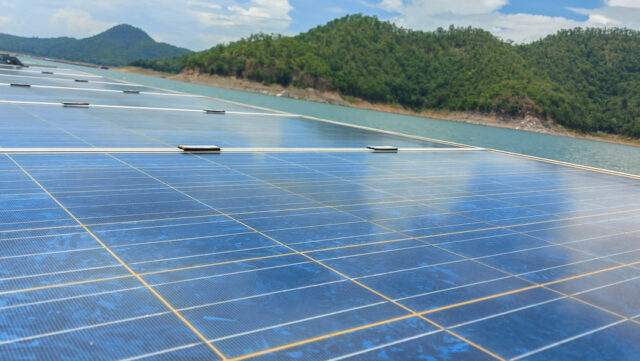A plan to cover California’s 6,400-kilometre network of canals with solar panels would save more than 246,000 megalitres of water each year by reducing evaporation, new research shows.
“This would be enough to irrigate 50,000 acres of farmland or meet the residential water needs of over 2 million people,” says study co-author Brandi McKuin, a postdoctoral researcher in environmental studies at the University of California.
McKuin estimates solar installed above California’s canals could provide 13 gigawatts of renewable energy capacity, roughly half of the new sources the state needs to add to meet its clean electricity goals of 60 per cent from carbon-free sources by 2030 and 100 per cent renewable by 2045.
Water scarcity is a major issue in California, where 100 per cent of the state is experiencing moderate drought conditions and 33.3 per cent is in exceptional drought. California’s previous drought ended in 2019, leading some experts to believe the state is in the grip of a megadrought exacerbated by climate change. A 2020 study published in Science found the period from 2000 to 2018 was the driest 19-year span in south-western North America, including California, in 500 years.
According to an article published at The Conversation by McKuin and her colleague Roger Bales, Distinguished Professor of Engineering at the University of California Merced, most of California’s rain and snow falls north of Sacramento during the winter, while 80 per cent of its water use occurs in Southern California, mostly in summer. A 6,400-kilometre canal system distributes water to around 35 million Californians and 2.3 million hectares of farmland across the state, with between 1 and 2 per cent of water lost to evaporation.
“Installing solar panels over the canals makes both systems more efficient,” write McKuin and Bales. “The solar panels would reduce evaporation from the canals, especially during hot California summers. And because water heats up more slowly than land, the canal water flowing beneath the panels could cool them by 10 F, boosting production of electricity by up to 3 per cent.”
Canal-top solar arrays could also prevent the loss of 32,000 hectares of arable land and natural habitat to solar farm development. Agriculture is a major industry in California, which produces more than 50 per cent of the fruits, nuts and vegetables consumed in the US.
Many benefits of fitting solar panels above canals
India, a country with a population density of 464 people per square kilometre – which puts pressure on land use – is a pioneer in canal-top solar installations.
In 2015, solar panels were installed along a 750-metre stretch of canal as part of a pilot program in Gujarat. Since then, several other canal-top solar installations have been commissioned around the country.
As well as reducing evaporation and providing clean energy, canal-top solar arrays also help reduce the growth of aquatic weeds that block drains and restrict water flow. McKuin and Bales estimate shading canals would save AU$90 million each year through reduced herbicide use and weed management.
The researchers call for the construction of canal-top solar demonstration projects in California to “help operators, developers and regulators refine designs, assess environmental impacts, measure project costs and benefits, and evaluate how these systems perform”.
“Building smart solar developments on canals and other disturbed land can make power and water infrastructure more resilient while saving water, reducing costs and helping to fight climate change,” they write.














